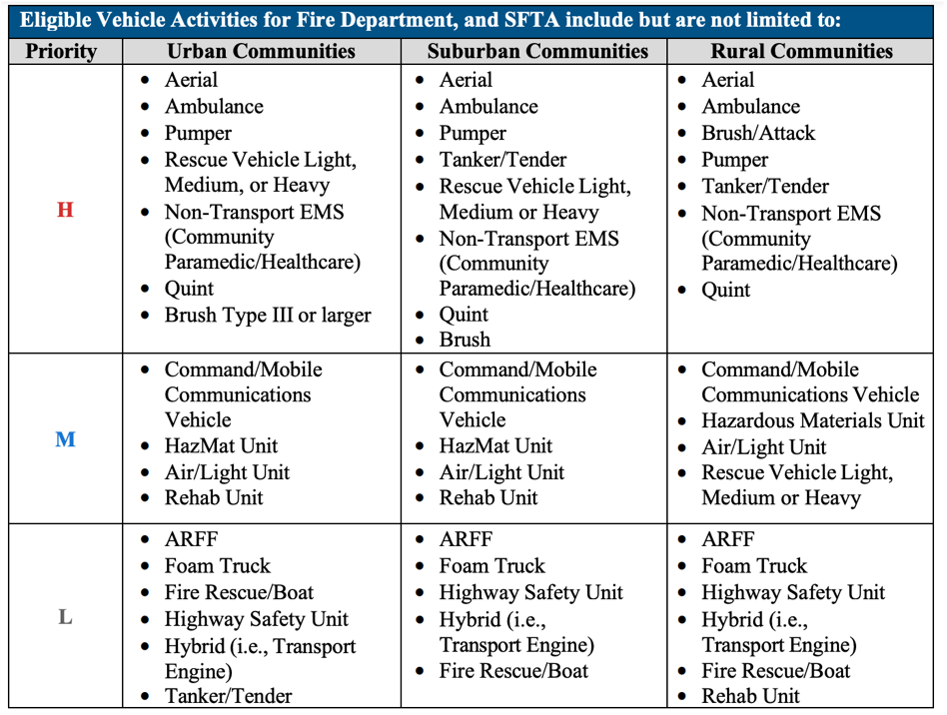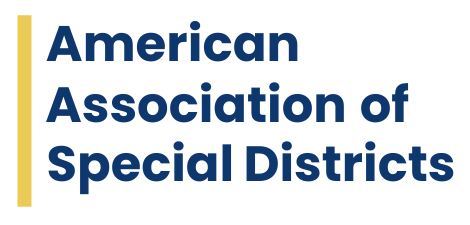The Federal Emergency Management Agency (FEMA) will open its Fiscal Year 2024 Assistance to Firefighter Grant (AFG) application period on Tuesday, November 12 – and the nation’s 7,000+ special districts providing emergency services are eligible to apply.
The program is intended to provide critical resources to equip and train emergency responders, improve infrastructure, enrich first responder health and safety, drive operational efficiencies, enhance community resiliency needs, and more. Applications are due Friday, December 20, at 5 p.m. ET.
Get started on the “FEMA GO” Portal. | Make sure you have your SAM number.
The Financial Specs:
Projects FEMA funds in the FY24 AFG program year projects will be funded at a lower in dollar-amount with $291.6 million available – 10 percent less than FY23 – and an estimated 2,000 awards to be granted. The reduction in funding was expected following passage of the FY24 Appropriations package, which included a 10 percent cut across many Department of Homeland Security programs to offset increased spending on the immigration system and disaster response.
The maximum grant and required cost share for a project depends on the population of the community the district serves. Only large jurisdictions may be considered for waivers to increase the maximum grant allocation. According to the FY24 AFG Notice of Funding Opportunity:

Fire districts or ambulance districts seeking AFG for eligible projects must provide match funds in order to be eligible for the grant. Applicants serving a population of 20,000 or fewer will need 5 percent match, those serving between 20,000 and 1 million will need a 10 percent match, and all others a 15 percent match.
ProTip: Special districts unable to meet match requirements or concerned about benefit/cost analysis scores may explore the possibility of partnering with another district, city, or even a county to co-apply. There’s power in numbers!
Understand the AFG Program Priorities

Special fire, ambulance, emergency services, and rescue districts seeking the FY24 Assistance to Firefighter Grant opportunity should keep in mind the key priorities and objects the AFG program aims to fund.
For instance, the AFG scoring panel will give high priority to fund AFG applications geared toward hands-on, instructor-led training that meets federal and state adopted standards and fulfills training certification needs.
FEMA also announced it would only consider awarding funds for equipment if it has received a “high priority” designation to achieve the goals of AFG. A list of what is considered high priority begins on Page 64 of the FY24 AFG NOFO). “H” indicates a high priority designation with “M” signifying a medium priority, and “L” being a low priority.
For districts providing ambulance services, FEMA will consider projects on a higher priority basis if the district is seeking to elevate its response levels and certifications, as well as those districts looking to train community paramedics.
A priority matrix of vehicles FEMA will fund depending on the type of community the district serves begins on Page 80 with featured fire district priorities above.
FEMA considers all of the eligible EMS vehicles as “high priority,” and includes ambulances, bariatric ambulances, and non-transport EMS vehicles.
Build the Narrative
Further, make sure the narrative and statement of needs addresses six key areas those who review AFG applications will be paying mind to:
- Identify the critical infrastructure in the district service area that would benefit from completion of the project. For instance: if your project is awarded, how would it serve schools, major transportation needs, water and wastewater services, etc.
- Discuss the financial need and situation for the special district as well as for the community; and, be as explanatory as possible. Discuss the property tax outlook, dependence on community fundraisers, billing and reimbursement issues, any sweet tax breaks private organizations have received to be located in the community, and lean in on any “environmental justice” or “disadvantaged community” status the district’s service area may have.
- Give a thorough description of the project the district seeks to fund with the AFG grant, how it meets core priorities of the AFG program, share what would happen in the community if the project does not come to fruition, and much more.
- Provide full cost/benefit analysis of the project and its impacts on the community served.
- Describe how the trainings, vehicles, PPE, or other eligible project would be beneficial to everyday use at the district.
FEMA has provided a best practices-style narrative development document for the process. Click here to check it out.
Getting Started
Get started on the “FEMA GO” Portal.
Interested special districts must first secure a Unique Identification Number on www.sam.gov or ensure their entity status is active, which is required to pursue all federal funding opportunities. Districts must also create an account on www.go.fema.gov prior to beginning their application, then use the account to submit.
More information on “FEMA GO” is found here. Download a FEMA AFG application checklist here.
FEMA is offering 14 live virtual AFG application development workshops – each are two hours and will be scheduled throughout the open application period. Each workshop features FEMA Headquarters and Regional program staff that will provide perspectives on building a successful AFG application.
Click here to browse the workshop schedule and register for one that fits your schedule.
Have questions? Need a referral for grant services? Email contact@americasdistricts.org.

